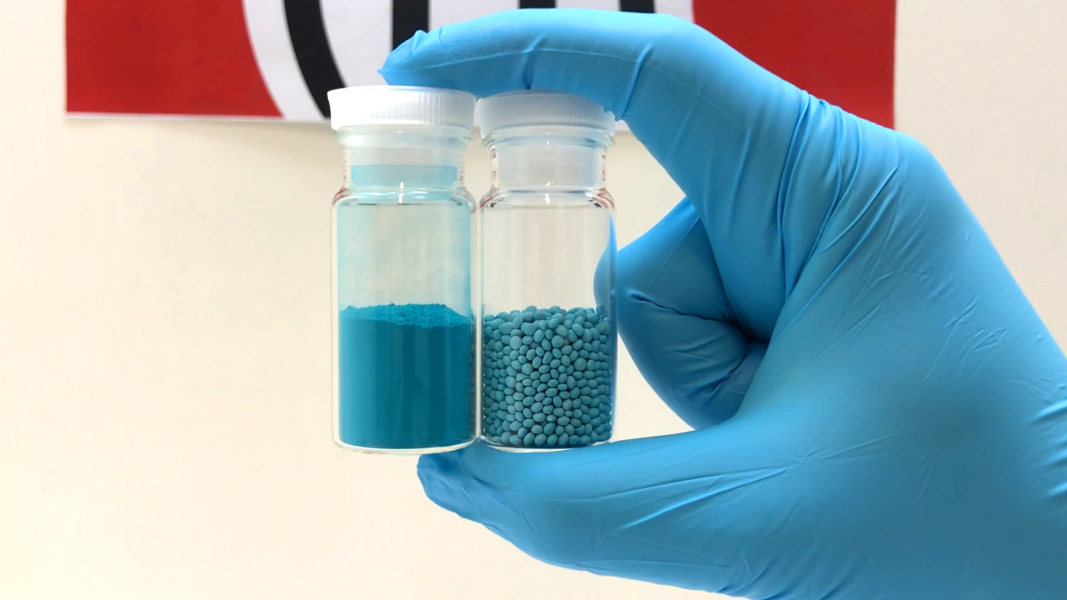Many resources on Earth are limited, including iodine (I2), which is one of the least-abundant non-metallic elements. Capture and recovery of I2 is an important industrial practice.
In their paper in Advanced Functional Materials, Dr. Kyriakos C. Stylianou and co-workers from École Polytechnique Fédérale de Lausanne (EPFL Valais) present metal–organic framework@polymer (MOF/polymer) composite beads for I2 capture and recovery.
Dr. Tu N. Nguyen: “The main challenge for recovering iodine is that the regeneration of the conventional silver-based adsorbents is really hard and costly. However, MOFs have shown great potential owing to their structural tunability and high surface area, which make these materials excellent candidates. But, using MOFs as a crystalline powder in processes is not favorable.”
Bardiya Valizadeh: “The challenge in MOF powder processing is that usually conventional powder processing causes change in the structure of the crystal or loss of the BET surface area. But, the method that we used can preserve the intrinsic porosity of the MOF, and at the same time improve the performance of the composite material through the synergy of the polymer with the MOF crystals.”
MOFs were synthesized and shaped into polymers beads by dropwise addition of the MOF/polymer mixture into a coagulation bath.
The adsorption capacity of I2 vapor by the beads was higher than that of the corresponding powders. In solution, the adsorption capacity of the beads (HKUST-1/PES) exhibited better uptake and rate of adsorption than the crystalline powder.
The potential of the HKUST-1/polymer composite beads as promising adsorbents for I2 capture and recovery was demonstrated using two sequential gas-sparged adsorption columns, and showed that more than 99% of I2 was recovered when using HKUST-1@PES beads.
Dr. Kyriakos C. Stylianou: “Our approach can be further used for the generation of beads with any MOFs and any polymers, and this opens the door for the use of beads to a plethora of different industrial applications, including gas storage and separation, catalysis, sensing, and water remediation.”
To find out more about these MOF/polymer composite beads for the capture and recovery of I2, please visit the Advanced Functional Materials homepage.

















